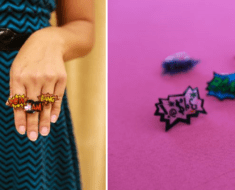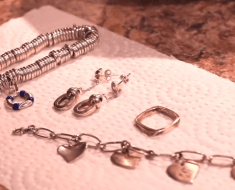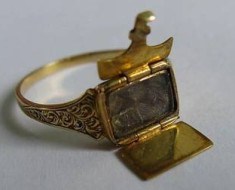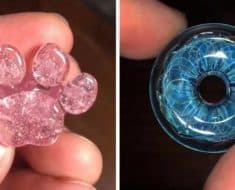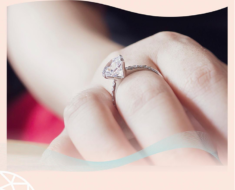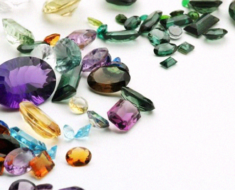Diamonds are and always will remain the ultimate je ne sais quoi when it comes to jewelry. Poems and songs have been written about them, battles have been waged for them, and it’s no wonder. Their multi-colored glow is unique, and nothing quite delivers a similar effect.
Whether you are looking to buy a diamond for a special gift, or simply for investing in something that will never lose its value, read this guide first. You will be more familiar with what you should look for in a diamond, and what the various symbols and markings on the jewel’s certificate mean.
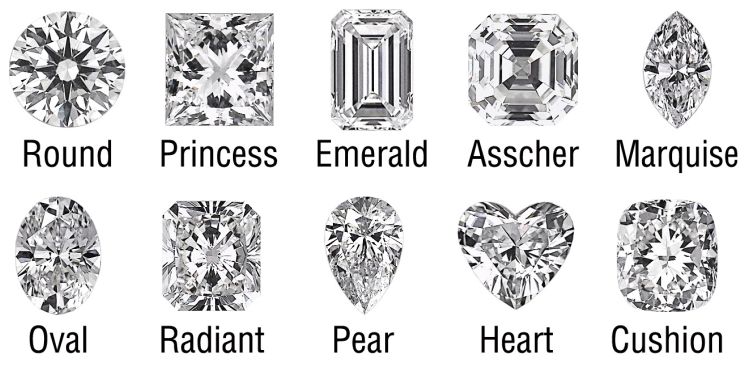
The most common diamond shapes
Choosing the basic characteristics of diamonds
The Shape
The shape gets easily confused with the cut, because most jewelers call each shape with a name like ‘Princess cut’, ‘Emerald cut’ and so on. But the shape and the cut are two very different things.
You can see the most common diamond shapes in the picture above. According to Diamond Authority experts, when all other factors are equal in value, round shaped diamonds are more precious, because they have superior light-reflecting properties. As for the other diamond shapes, there are no ranks and value differences.
The Cut
The cut of a diamond refers to how large the top of the stone is compared to its bottom, separated via the horizontal symmetry line. It’s best if the proportions are at about 1/3 above the line and 2/3 below. These measurements ensure the maximal light refraction and brilliance of the stone.
The Size (Carats)
When it comes to diamonds, unlike precious metals, carats refer to the weight of each stone. Even if you are used with the gold appraisal system, where carats are used to measure the metal’s purity, you can be certain that in stones, carats refer simply to weight.
In fact, we have a simple formula for calculating diamond carats: Grams / 0.2 = carats.
To determine the number of carats a diamond has, first you must be sure of its weight in grams (a jeweler’s scale will be able to give you a precise result) and then divide it by 0.2. For example, a 0.1 grams diamond will weigh half a carat, because 0.1 / 0.2 = 0.5.
The Color
A diamond’s color can vary between various hues of yellow and white. The less yellow and the whiter, the more precious the stone is. A slightly yellowish hue in white diamonds is normal and expected; there are very few purely white diamonds.
The Clarity
The clarity of the diamond, sometimes also called the refractive index, refers to the ease with which light propagates through the gemstone and gets reflected back. The more brilliant the stone, the more valuable it is.
The purity of the color and the clarity of a diamond often go hand in hand, but it is not necessarily so always. Sometimes, a yellow-ish diamond can exhibit far more clarity than a purely white one. This is why every factor should be appraised separately when evaluating a stone.
What price range to expect
The price range of diamonds is not something set and fixed for the entire world and all jewelry houses, just like there isn’t a fixed price for gold or other precious metals. There can be a price you can more or less expect for the raw form material, but the refined stuff can vary much more, because it involves more specialty work.
Even if you’re looking for loose diamonds and not jewelry per se, you can still expect significant price variations, considering the expertise of the gemologist and jeweler who had the stones cut and processed.
As a general rule of thumb, the bigger diamonds get, the more their price soars, in an almost geometric proportion. A 5-carat large diamond is much more expensive than 5 smaller 1-carat diamonds.
You may be preoccupied with what counts as fair price for diamonds, and justly so. But especially when you are buying jewelry containing diamonds (and not the loose stones), many other factors intervene. The brand of a jewelry house and their designer’s vision may be so unique that they add up to the price solely for the originality of the designs.
The same goes for the amount of work that goes into the finished product and so on. As much as we’d love to give you a pre-set range of ‘acceptable’ prices, it’s impossible. The only precaution you can – and should – take is to make sure you are buying your diamonds from a reputable and verified source. If surprisingly cheap offers pop up, don’t fall into the trap of a quick buy until you had to time to look up their credentials.
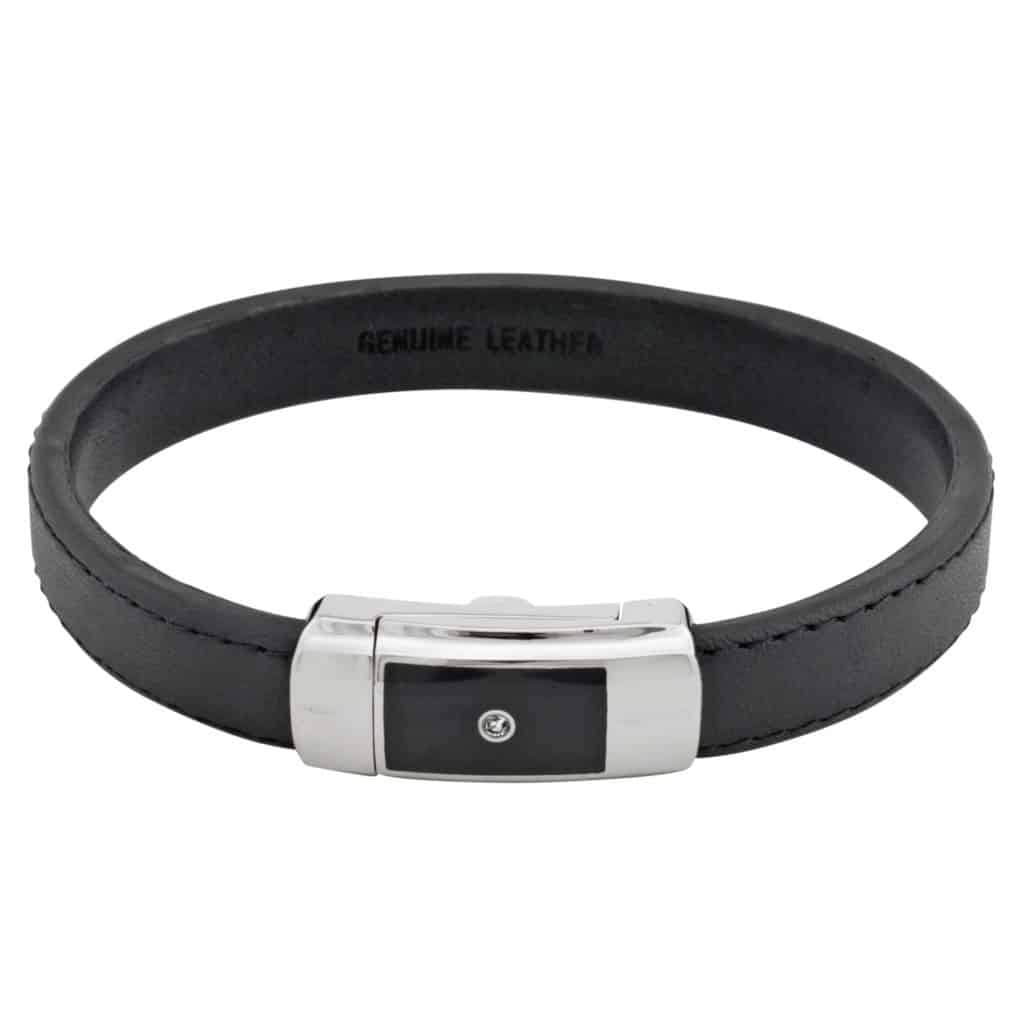
A men’s leather bracelet with diamond.
Extra info about the metal, other materials and setting
Assuming that you are buying a diamond already set inside a jewel, you should also pay attention to the metal and other components of the piece you are buying. Even if the diamond you chose is perfectly cut and high quality, a bad setting can make the overall effect either unpleasant, or the jewelry piece may need frequent fixes. Neither of those outcomes is desirable, so make sure you pay attention to the following details.
The metal:
In very unusual cases, you may see diamonds being set in silver jewelry. Buying such a combination is a bad idea. No matter the quality of the silver, it will still get ruined eventually, much sooner than the diamond.
The solution will then be to remove the precious stone and have a jeweler set it in a new piece of jewelry, but since this will be done several times in a diamond’s lifespan, it’s best not to do it more often that absolutely needed. If you go for silver, this will be needed quite often.
This leaves only platinum and gold as suitable options. The choice between yellow gold, red gold or white metals (white gold or platinum) is a matter of personal taste and won’t affect the longevity of monetary value of the diamond.
Other jewelry components:
No matter how innovative hippie-chic and intentionally unusual a creation aims to be, never accept a piece of jewelry that pairs something as lasting as a diamond with materials that will deteriorate soon. No leather or beads of any kind, therefore.
As for other precious stones, you should make sure they are more or less from the same league of value and endurance as the diamond. Swarovski crystals, as one of the cheapest diamond imitators on the market, are not a good match, for example. Neither should zirconia be, though combining zirconia stones with authentic diamonds in the same jewelry piece is more common.
Sapphires, topaz, ruby or emerald stones are good choices to accompany diamonds within the same piece.
But, at the end of the day, it can all depend on your personal preferences and on the significance each detail holds for you. Our guide was only meant to walk you through the main objective quality factors to be aware of when shopping for a diamond. The final choice is yours.
Picture sources: Pinterest.com and daysjewelers.com






